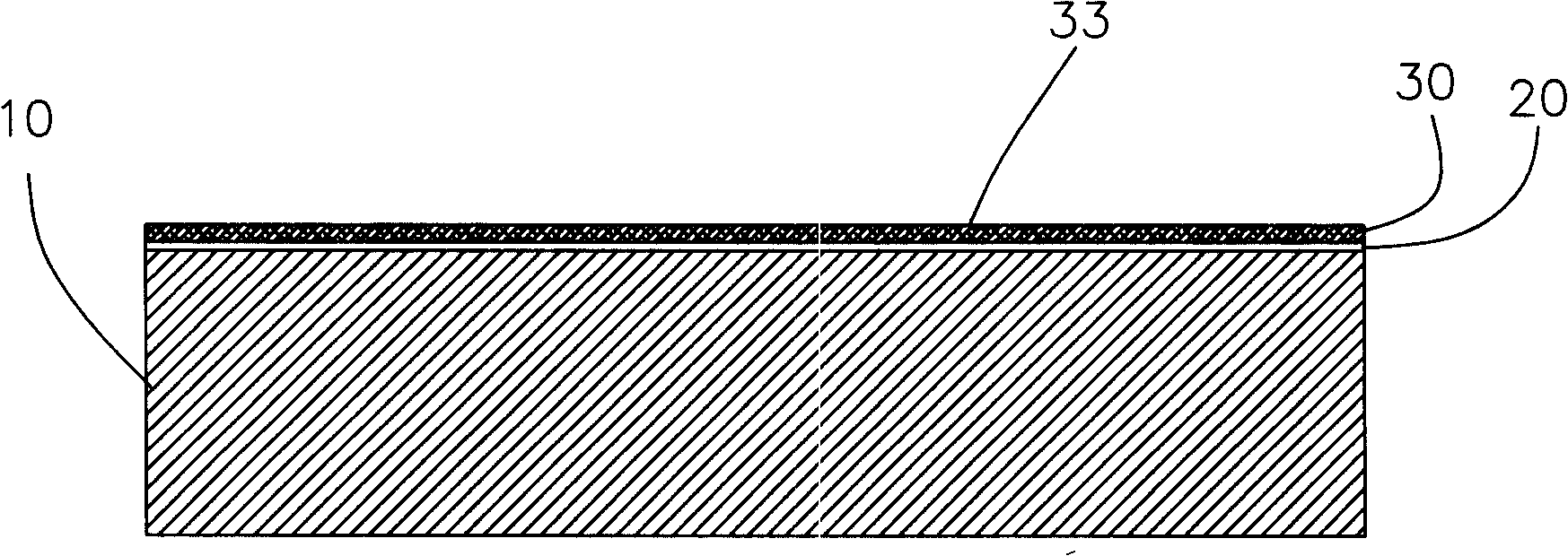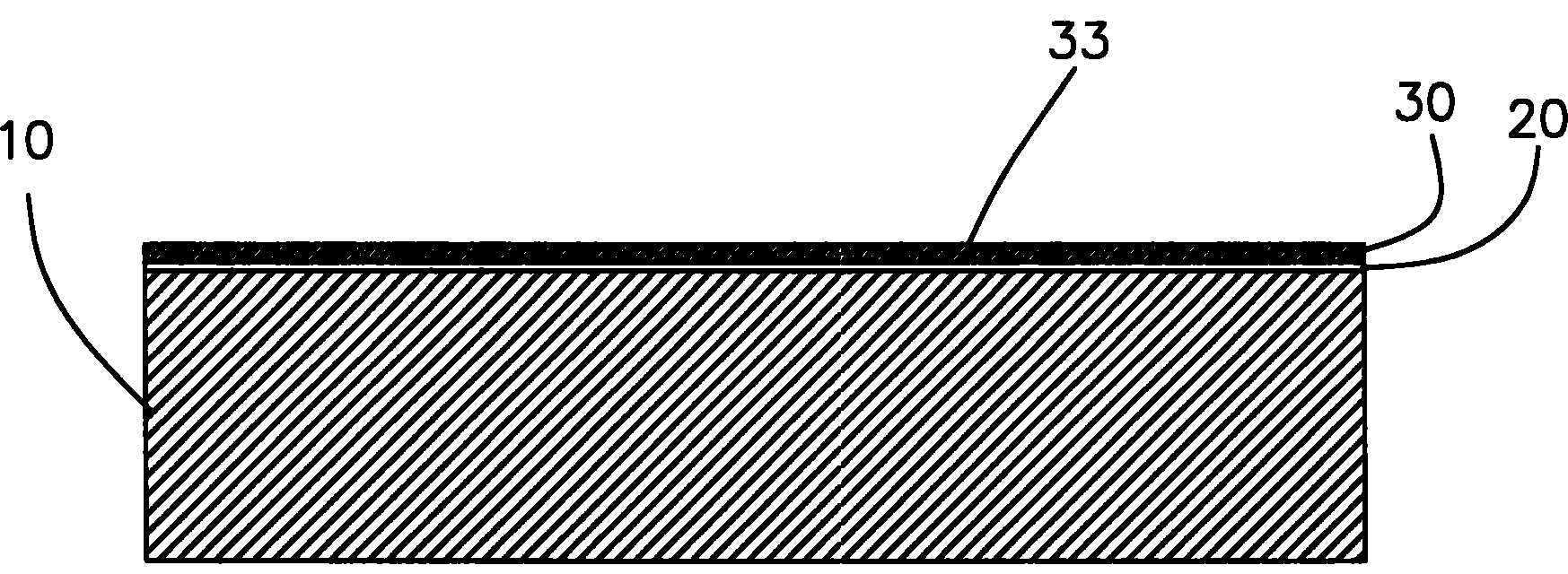Hydrophilic dispersion liquid and printing plate base adopting the dispersion liquid
A dispersion, hydrophilic technology for lithographic printing plate bases. , In the field of hydrophilic dispersions, it can solve the problems of increasing printing costs, the hydrophilic surface is easy to lose hydrophilicity, and the hydrophilicity is reduced, and achieve the effects of avoiding environmental pollution, expanding the thickness selection range, and good binding performance
- Summary
- Abstract
- Description
- Claims
- Application Information
AI Technical Summary
Problems solved by technology
Method used
Image
Examples
Embodiment 1
[0031] Prepare a hydrophilic dispersion, which includes organic components, inorganic components and some additives, wherein organic components account for 39wt% to 48wt%, inorganic components account for 50wt% to 60wt%, and auxiliary agents account for 1wt% to 2wt% .
[0032] The organic component includes a hydrophilic component and a surfactant, wherein the hydrophilic component accounts for 35wt%-40wt% of the hydrophilic dispersion liquid, and the surfactant accounts for 0.1wt%-2wt% of the hydrophilic dispersion liquid.
[0033] The inorganic component is selected from hydrogel-like alumina. The hydrophilic component is a mixture of water-soluble resin PVA, acrylamide and polyethylene oxide. The auxiliary agent is selected from water-soluble or water-dispersible isocyanate. Surfactant selects cationic surfactant bromide or cetyl trimethyl ammonium chloride or octadecyl dimethyl benzyl ammonium chloride.
Embodiment 2
[0035] In the hydrophilic dispersion of this embodiment, the hydrophilic component accounts for 41.7wt% to 45.5wt% of the hydrophilic dispersion, the surfactant accounts for 2wt% to 2.5wt% of the hydrophilic dispersion, and the inorganic component accounts for 52wt% to 55wt%, and the additive accounts for 0.5wt% to 0.8wt%.
[0036] Wherein, gel-like silicon dioxide is selected as the inorganic component; carboxymethyl cellulose is selected as the hydrophilic component; polyoxyalkylene fatty alcohol ether is selected as the non-ionic surfactant as the surfactant. The rest are the same as embodiment 1.
Embodiment 3
[0038] In the hydrophilic dispersion of this embodiment, the hydrophilic component accounts for 35.6wt% to 37.3wt% of the hydrophilic dispersion, the surfactant accounts for 0.8wt% to 1.2wt% of the hydrophilic dispersion, and the inorganic component It accounts for 61wt%-64wt%, and the auxiliary agent accounts for 0.9wt%-1.2wt%.
[0039] The inorganic components are selected from gel-like silica and powder-like zirconia. The hydrophilic component is a mixture of polyacrylic acid and sodium polyacrylate. The auxiliary agent is water-soluble or water-dispersible amino resin. Surfactant is selected anionic surfactant sodium dodecylbenzene sulfonate for use.
PUM
 Login to View More
Login to View More Abstract
Description
Claims
Application Information
 Login to View More
Login to View More - R&D
- Intellectual Property
- Life Sciences
- Materials
- Tech Scout
- Unparalleled Data Quality
- Higher Quality Content
- 60% Fewer Hallucinations
Browse by: Latest US Patents, China's latest patents, Technical Efficacy Thesaurus, Application Domain, Technology Topic, Popular Technical Reports.
© 2025 PatSnap. All rights reserved.Legal|Privacy policy|Modern Slavery Act Transparency Statement|Sitemap|About US| Contact US: help@patsnap.com


